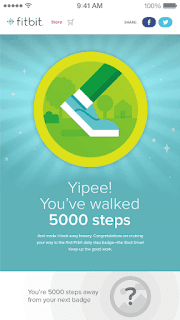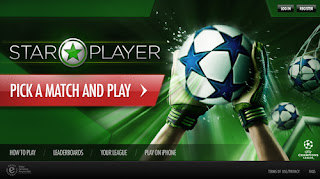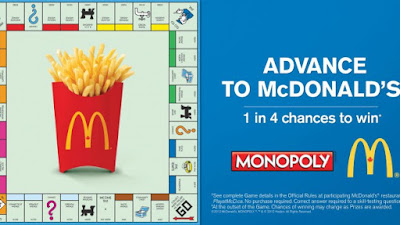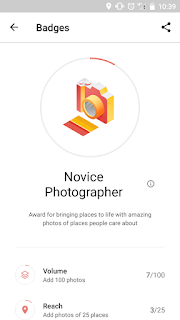Gamification in Healthcare - Finding the Right Balance between Motivation and Gameful Design
Gamification in Healthcare - Finding the Right Balance between Motivation
and Gameful Design
In a rapidly moving world where
people are gripped by technology in its various avatars, we are rapidly losing
touch with our selves. As a result one of the first casualties of such an
onslaught is our health. As we rapidly increase our ‘screen times’ and are near
paralyzed by a momentary lapse in internet connectivity and lag in our phones’ user interface, our minds and bodies have given themselves up to the mastery of
the machines. Someone once rightly said it, “the machines are becoming smarter,
while we as the human race, are becoming progressively weak and dumb.”
All this sounds apocalyptic; with
the possibilities of futures predicted by Hollywood movies like ‘The Terminator’
seeming increasingly possible and not too far in the future. Yet, we as gamers
and disciples of gamification would like to see this situation as one where “if
you can’t beat them, then join them!” The healthcare and fitness industry has
turned to gamification to keep users engaged and motivated in using the various
products and services that are offered by them.
In the context of health IT,
gamification is typically employed in the areas of medication adherence,
medical education-related simulations for professionals and caregivers and fitness
or wellness apps. Game
play focuses and controls our attention, taps into our innate strengths,
thrills us utterly, and compels us to greater resilience in the attainment of
more powerful and effective skills. That’s why many believe it is perfect for
behavior change in healthcare. Here are a few examples of the game
elements that some of the successful gamified apps are incorporated into their
game design:
1) Progress Bars:
Gamified healthcare app developers
invoke progress-related instinct by incorporating status and progress
completions bars into the design of the gamified app. It is estimated that almost
half of the patients with chronic diseases do not follow the prescribed
treatment. Gamified health tracking creates an environment that keeps the
patient from straying from the appropriate therapy path.
Fitbit:
To help employees in the corporate
sector cope better with the stress of their work, Fitbit in 2016 announced that
it was partnering with employers, corporations to track employees and mine that
data in order to monitor employee health habits. Fitbit was introduced way
before in several companies as “the corporate fitness tracker” creating common
challenges and competitions for employees – which is fun and motivating. A
company called Houston Methodist implemented a month-long step challenge,
where employees went head to head with their departmental CEOs on a daily basis
to beat each other at the number of steps taken. The results showed that the
there was an increase in the average daily step count to 16,000, up from a
previous meager average of 6000.
2) Sharing Progress and Results with Other Users:
Gamified apps that allow users to
share progress and results with their friends/other players or designing
an “honor roll”, helps developers of such apps create a competitive spirit and help
to stimulate the continued use of the service.
EveryMove:
This is an app that also
counts on the users’ competitiveness. It collects data from trackers and apps
we already use to allow friends to compare one another’s progress. Social motivation,
such as seeing that one’s friends went for a run today but one hasn’t yet, is a
strong one.
Blue Shield:
Blue Shield California, a
not–for–profit health insurer, attempts to make wellness fun via social media.
Participants earn points, badges, status, and see their progress. Blue Shield
claims that 80 percent of its employees have participated, and had a 50 percent drop in smoking prevalence.
3) Points, Medals, Badges, Leaderboards, and Virtual Currency:
By awarding points, medals,
stars, achievement badges or giving virtual currency during each stage of
progress. Thus, developers create a sense of accomplishment and increase
motivation levels.
Zombie Run:
Fitness running app 'Zombies,
Run!' gets runners to undertake 'missions' while being pursued by an augmented
reality zombie hoard. As the users run with their headphones on the app tells
the story and uses simulated sounds so that users can hear the zombies gaining
on them as they have to run faster to survive.
Bayer’s Didget Blood Glucose Meter:
This device connects to a
Nintendo DS gaming platform, and is intended for kids aged between 4 and 14. It
helps to manage their diabetes by rewarding them with points for consistent
blood glucose testing. As points accumulate, new game levels and options
unlock. There are leader boards with kids who collected the most points, web
games and an online community as well.
Monster Guard:
The American Red Cross developed
an app called Monster Guard focused on helping prepare children for
emergencies. It teaches kids through “Monster Guard Academy” how to prepare and
stay safe during home fires, hurricanes, floods or other disasters, and they
get points and medals for completing tasks.
Finally,
Employers, insurers, and
healthcare providers are focusing more energy on keeping people out of the
hospital by helping them manage their own health. Thus, the market demands
high-quality and complex solutions that make getting healthy more fun. To bear
all the valuable fruits of gamification, businesses in the healthcare and
fitness industry have to understand the environment to which it is applied.
In other words, specific gamification techniques need to be tailored to find
the right balance between motivation and gameful design in order to keep the
users continually engaged thereby bringing effective outcomes and results.









Comments
Post a Comment